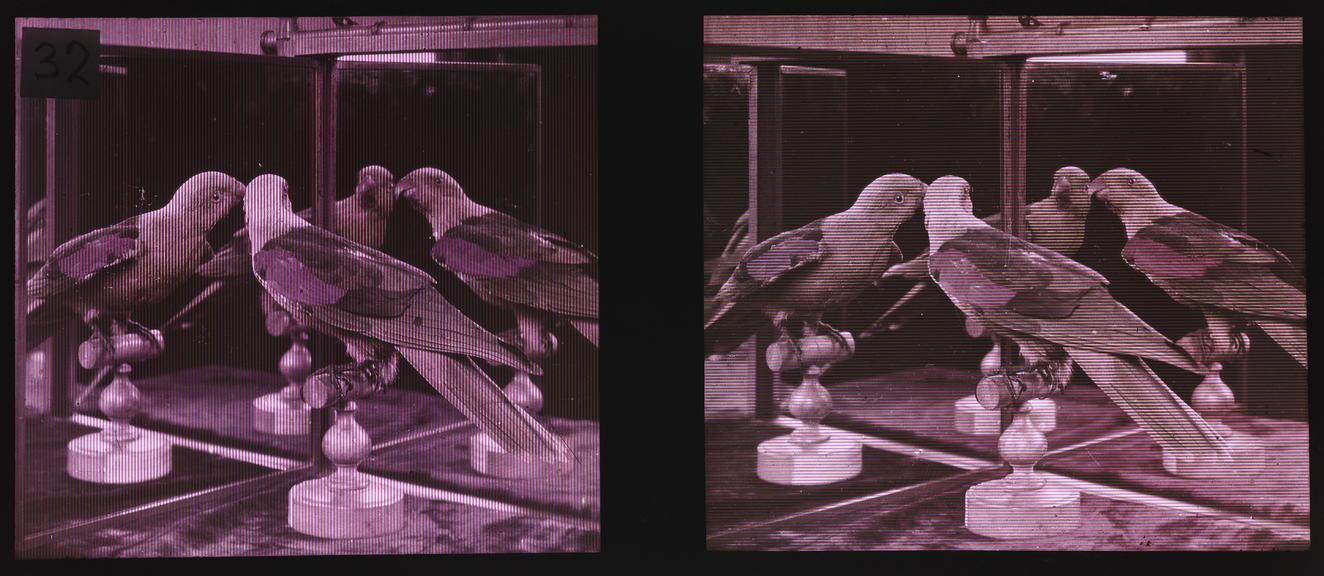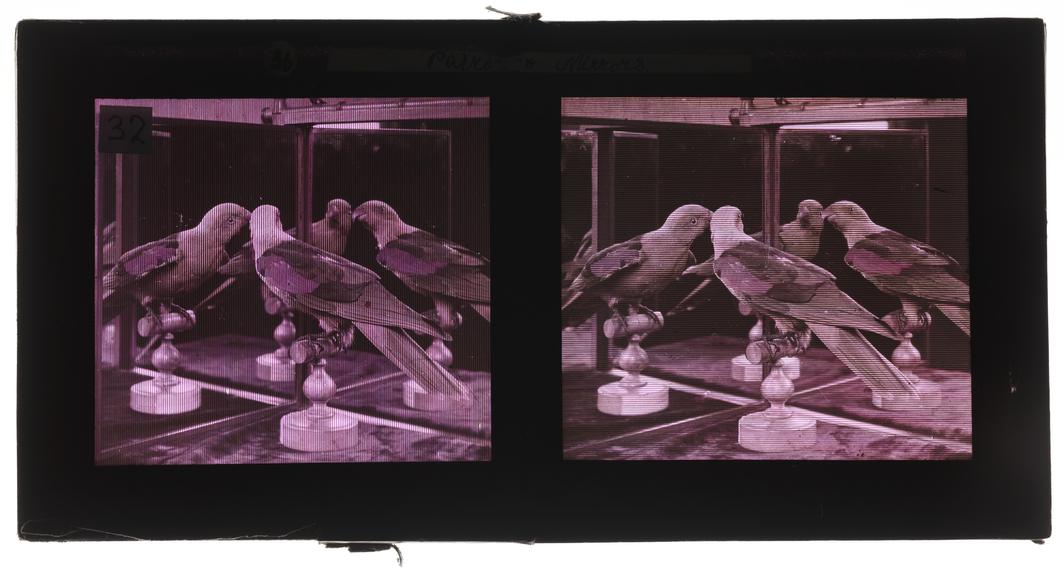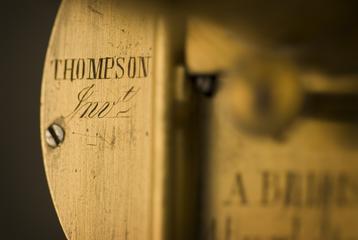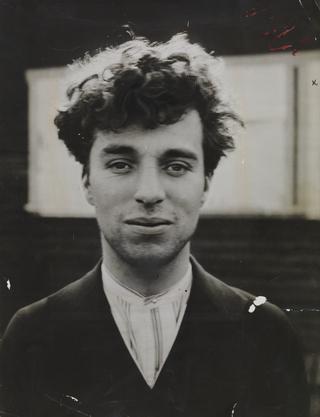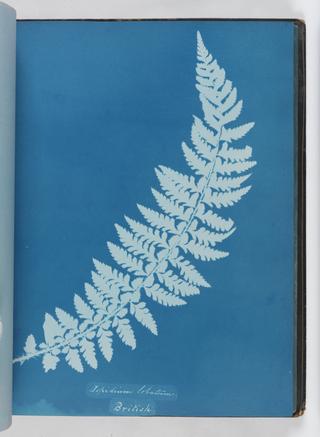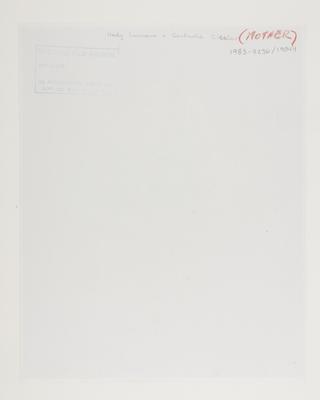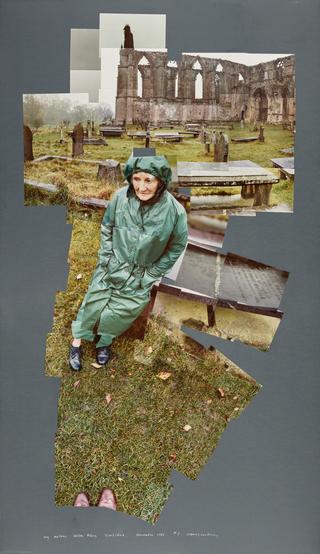Stereoscopic Joly transparency of a parrot
The Joly process was the first photographic process to use a single exposure through one filter which combined all three primary colours. It was devised by Dr John Joly of Dublin in 1894. Joly covered a glass plate with very fine red, green and blue lines (less than 0.1mm wide) in order to create a three-coloured filter screen.
When taking a photograph, this screen was placed in the camera in front of the plate. After exposure and reversal processing, the black-and-white positive image was carefully placed in register with another filter screen. The result was a colour transparency which could be viewed by transmitted light (light that passes through an object).
The Joly process was introduced commercially in 1895 and remained on the market for a few years. However, the limited colour sensitivity of the plates meant the results were not very successful.
- Measurements:
-
overall: 82 mm x 163 mm x 4 mm,
- Materials:
- glass and paper (fibre product)
- Object Number:
- 1991-5067/32
- type:
- stereoscopic photograph
- Image ©
- The Board of Trustees of the Science Museum
